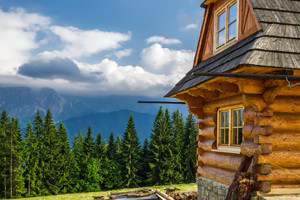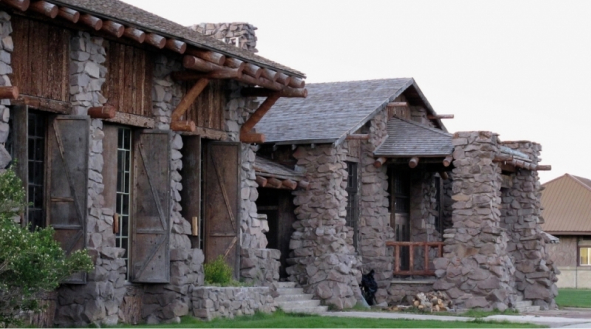With an abundance of wildlife in our hometown of Jackson, WY it is sometimes difficult to make the 1.5 hour drive up to Yellowstone National Park. This last weekend with fall colors in full bloom, we loaded up the van and headed up the highway with high hopes of bears, wolves, bison and moose. Below are some highlights of our trip as well as a few great wildlife viewing spots throughout YNP.
Lamar Valley
Our destination last weekend was Lamar Valley, best known for the greatest concentration of grizzlies and wolves in the park. With some luck and a good pair of binoculars or a spotting scope you may be able to see a wolf or grizzly, but it's not a guarantee. After two days of pre-dawn wake up calls our grizzly/wolf count was still at 0. Don't be disappointed though; instead concentrate on the abundance of bison, elk, antelope, osprey and bald eagles that seem to be around every corner. We witnessed antelope grazing with bison, elk crossing the Lamar river during sunrise and a beautiful bald eagle perched right along the road.
Hidden Local Gem: If you can get a campsite at Slough Creek, do it. It's off the main road a few miles and offers an opportunity to camp among less people and more wildlife. It's first come first serve so if you're not there before 11am you probably won't get a spot. Second choice: Pebble Creek Campground.
Hayden Valley
We drove through the Hayden Valley twice during our trip and it's stunning. Herds of Bison and Elk were scattered around and the Yellowstone River was full of amazing waterfowl including Canadian geese and a pair of egrets. If you've got a good eye you may see a bear or wolf, but again, don't hold your breath. The Yellowstone River runs along the east side of the road and there are plenty of turnouts for photo opportunities.
Mammoth/Gardiner
If you're on the hunt for elk then the Mammoth/Gardiner area is your spot. Because of its lower elevation elk can be seen grazing throughout every season. When we drove through we spotted three different large herds and plenty of signs warning visitors about the danger of approaching elk. The mating season occurs in the fall and elk can be more aggressive during this season so be alert.
Yellowstone is home to an abundance of wildlife spread throughout its 2.2 million acres. With all that space, you may have a hard time seeing exactly what you wanted but with the right tools (binoculars or a spotting scope) and a lot of patience you won't be disappointed.
Be Wildlife Saavy
A tourist's biggest blunder is treating that cozy looking bison or snuggly bear like it's a pet. These aren't pets. Hundreds of people are injured every year by wild animals, don't be one of them! Keep your distance and follow these basic safety steps.
- Don't approach any wildlife. No matter how calm, sweet, or slow these animals look they are not stuffed animals. Bears and Bison can run 30 mph; three times faster then you. Moose may appear sluggish but when threatened can move very quickly and will charge. Be aware, be safe and be smart.
- Don't hike after dark. When your vision is limited your less likely to see an approaching animal or one grazing just off trail. Plus many animals prefer grazing/hunting in the evening when it's cooler and disturbing feeding time isn't ideal. Hike during daylight hours and keep night hours for smores around the campfire.
- If you encounter a bear do not run. Remember safety tip number one? Bears can run 30 mph, way faster then you. If the bear is unaware of you turn around or detour around it. If the bear is aware of you, slowly back away.
For information on wildlife tours, take a look at a number of Sightseeing Tour Operators in Yellowstone.






